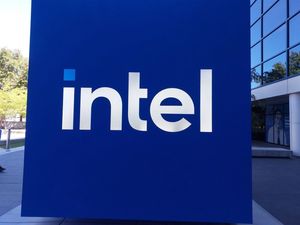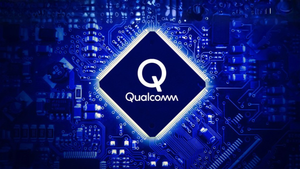
Oracle's (NYSE: ORCL) ambitious foray into the artificial intelligence (AI) cloud market is facing significant headwinds, with the company's AI cloud business reporting substantially lower profit margins due to the high cost of Nvidia (NASDAQ: NVDA) chips. This revelation, surfacing on October 7, 2025, has sent Oracle's stock tumbling and ignited widespread investor concern regarding the overall profitability of AI infrastructure, prompting a re-evaluation of the sector's financial viability.
Internal company documents, made public today, reveal a stark contrast between Oracle's traditional software business, which boasts gross margins around 70%, and its burgeoning AI cloud segment. For the three months ending in August 2025, Oracle generated approximately $900 million in revenue from renting out servers powered by Nvidia chips, yet its gross profit stood at a mere $125 million, translating to a 14% gross margin. This immediate downturn in profitability has cast a shadow over Oracle's aggressive expansion into the AI compute market, leaving investors questioning the long-term financial returns of such capital-intensive ventures.
Oracle's AI Ambitions Meet Profitability Reality
Oracle's aggressive push into the lucrative artificial intelligence (AI) cloud market, characterized by soaring revenues and monumental contracts, has hit a profitability snag. Internal reports, revealed on October 7, 2025, indicate that the company's AI cloud business, particularly its service for renting out Nvidia (NASDAQ: NVDA)-powered servers, is operating with significantly thinner profit margins than anticipated. For the three months ending August 2025 (Oracle's fiscal Q1 2026), this segment generated approximately $900 million in revenue but yielded a gross profit of only $125 million, resulting in a meager 14% gross profit margin. This figure stands in stark contrast to Oracle's traditional software business, which typically enjoys gross margins around 70%.
Adding to the financial pressure, Oracle reportedly incurred an operating loss of nearly $100 million in its latest quarter specifically from the rental of Nvidia Blackwell chips for AI cloud services. The primary culprits behind these compressed margins are the substantial cost of acquiring and operating high-performance Nvidia GPUs (such as Blackwell, H100, and H200), coupled with Oracle's aggressive pricing strategies designed to capture market share and attract major clients in the fiercely competitive AI cloud infrastructure space. Operational expenses, including energy consumption, labor, and data center depreciation, further exacerbate the profitability challenges. Reports suggest that even renting older Nvidia chips in smaller quantities has resulted in losses for Oracle.
Oracle's journey into the high-stakes AI cloud arena has been marked by rapid expansion and strategic partnerships. In March 2024, Oracle (NYSE: ORCL) first highlighted burgeoning demand for its Gen2 AI infrastructure and expanded its collaboration with Nvidia to deliver sovereign AI solutions. Throughout late 2024 and early 2025, Oracle continued to report "record level AI demand," with Oracle Cloud Infrastructure (OCI) revenue soaring and GPU consumption skyrocketing. Key milestones included the deployment of one of the world's largest AI SuperComputers, scaling up to 65,000 Nvidia H200 GPUs, and a deepened alliance with Nvidia to make its AI Enterprise software and NIM microservices natively accessible through the OCI Console. In September 2025, Oracle announced a dramatic surge in its remaining performance obligations (RPO) to $455 billion, largely driven by securing multi-billion dollar contracts with leading AI entities, including a widely reported five-year, $300 billion agreement with OpenAI for data center capacity. These announcements initially propelled Oracle's stock to significant gains, setting the stage for the current re-evaluation following the October 7th revelations.
Key players in this unfolding narrative include Oracle, which has strategically invested heavily in building "AI factories" and Superclusters, driven by CEO Safra Catz and Chairman and CTO Larry Ellison. Nvidia, led by founder and CEO Jensen Huang, is the critical supplier of the high-performance AI chips that are indispensable for Oracle's AI cloud operations, with its ability to command premium prices directly impacting cloud provider profitability. OpenAI, a pivotal client for Oracle's AI cloud services with its colossal $300 billion contract, also plays a significant role, as does its reported participation in the ambitious "Stargate project" with Oracle and SoftBank. The initial market reaction on October 7, 2025, saw Oracle's shares decline by as much as 7.1%, prompting analyst downgrades and considerable investor apprehension. While Nvidia's shares also saw a slight dip, the impact on the chip giant appeared less severe, as it continues to benefit from overwhelming demand for its chips across the AI industry.
Shifting Sands: Who Wins and Loses in the AI Cloud Profitability Squeeze
Oracle's (NYSE: ORCL) struggle with thin AI cloud margins, primarily due to the high cost of Nvidia (NASDAQ: NVDA) chips, is sending ripples across the technology sector, creating a dynamic landscape of potential winners and losers among cloud providers, chip manufacturers, and AI-centric companies. This scenario underscores a broader industry trend where immense investment in AI infrastructure is colliding with the realities of profitability.
Other major cloud providers, or hyperscalers, face similar challenges. Companies like Amazon Web Services (AWS) (NASDAQ: AMZN), Microsoft (NASDAQ: MSFT) Azure, and Google Cloud (NASDAQ: GOOGL) are also making immense investments in AI infrastructure, which is driving up operating expenses and compressing profit margins. AWS, for instance, saw its operating margin drop in Q2 2025, largely due to significant spending on AI infrastructure. The "Big Three" hyperscalers are collectively projected to invest around $240 billion annually in data centers, power, and servers to meet AI demand, indicating that high costs and margin pressures are an industry-wide concern. However, these hyperscalers are strategically pivoting towards developing their own custom AI chips to mitigate reliance on Nvidia and gain better control over costs, performance, and supply chains. Google (NASDAQ: GOOGL) utilizes its Tensor Processing Units (TPUs), AWS (NASDAQ: AMZN) has developed Inferentia and Trainium chips, and Microsoft (NASDAQ: MSFT) has unveiled its custom-designed Azure Maia 100 AI accelerator and Azure Cobalt 100 Arm-based CPU. This in-house development strategy positions them as potential long-term "winners" by optimizing their entire system architecture for more cost-effective and specialized AI services.
For chip manufacturers, the impact is mixed. Nvidia (NASDAQ: NVDA), while currently enjoying a dominant position and commanding premium prices for its GPUs, faces long-term pressure. If cloud providers consistently find AI infrastructure unprofitable due to chip costs, it could lead to a slowdown in GPU purchases or pressure on Nvidia's pricing. The rise of custom silicon from hyperscalers directly reduces demand for Nvidia's general-purpose GPUs, intensifying competition and potentially leading to margin compression for Nvidia in the future. Conversely, AMD (NASDAQ: AMD) is emerging as a strong contender with its Instinct MI series accelerators. Partnerships with Oracle, Meta (NASDAQ: META), and Microsoft signal a growing adoption of AMD's chips as alternatives to Nvidia, positioning AMD as a potential "winner" as cloud providers seek diversified chip suppliers. Intel (NASDAQ: INTC), while less dominant in high-end AI chips, could also see gains in niche areas through its custom Xeon processors and partnerships. A new wave of AI chip startups, including Cerebras, Groq, and Mythic, could also gain traction if cloud providers seek more cost-effective or specialized alternatives.
Paradoxically, AI-centric companies—enterprises, startups, and developers who are customers of cloud AI—stand to be significant "winners." If cloud providers like Oracle are compelled to lower AI service prices due to margin pressures, these companies will benefit from more affordable access to powerful AI compute resources. This reduction in costs will lower financial barriers to entry, making AI technology more accessible and accelerating AI adoption and innovation across industries. Companies can access advanced AI tools and deploy sophisticated algorithms and machine learning models without requiring massive upfront investments in their own infrastructure, leading to increased efficiency, reduced operational costs, and improved decision-making.
A Bellwether for the AI Economy: Wider Significance of Oracle's Margin Squeeze
The revelation of Oracle's (NYSE: ORCL) razor-thin AI cloud margins, directly linked to the high cost of Nvidia (NASDAQ: NVDA) chips, serves as a significant bellwether for the broader artificial intelligence (AI) economy. This event highlights several critical industry trends, potential ripple effects on competitors and partners, and even regulatory implications, drawing parallels to historical shifts in the technology landscape.
At the heart of the issue is the immense capital expenditure and high operational costs associated with building and running AI infrastructure. Nvidia's near-monopolistic control over the AI training chip market, with estimates suggesting over 80% market share for its GPUs, allows it to command premium prices. This dominance directly squeezes the profit margins of cloud providers like Oracle, demonstrating that while the demand for AI compute is skyrocketing, the immediate profitability for those supplying the raw processing power is not guaranteed. This situation is particularly salient given the projected global AI infrastructure spending, which is set to surpass $200 billion by 2028. Furthermore, the event underscores the thinning profitability within the AI cloud segment, with Oracle's gross margins for Nvidia-backed services dipping as low as 14%, significantly below its overall corporate margins. The substantial energy consumption of AI workloads also emerges as a critical trend, with massive power demands leading to concerns about electricity prices, grid capacity, and sustainability goals, pushing some, like Oracle, to explore unconventional power sources such as nuclear reactors for their data centers.
The ripple effects on competitors and partners are profound. Other major cloud providers—Amazon Web Services (AWS) (NASDAQ: AMZN), Microsoft (NASDAQ: MSFT) Azure, and Google Cloud (NASDAQ: GOOGL)—are likely experiencing similar margin pressures and capacity constraints. Oracle's predicament will undoubtedly accelerate their efforts to develop and deploy their own custom AI chips, such as Google's (NASDAQ: GOOGL) Tensor Processing Units (TPUs), AWS's (NASDAQ: AMZN) Trainium and Inferentia chips, and Microsoft's (NASDAQ: MSFT) Azure Maia 100. This strategic pivot aims to reduce reliance on external, high-cost GPU suppliers, control costs, and optimize performance for their specific cloud environments. For Nvidia (NASDAQ: NVDA), while short-term demand remains robust, the long-term threat of hyperscalers developing in-house silicon looms large, particularly for AI inference workloads. This could eventually lead to a slowdown in GPU purchases or pressure on Nvidia's pricing, even as Nvidia strategically shifts its focus to AI infrastructure partnerships rather than direct cloud services to avoid competing with its major customers. The margin squeeze could also open doors for other chip manufacturers like AMD (NASDAQ: AMD) to gain traction as cloud providers seek diversified suppliers.
From a regulatory standpoint, Nvidia's near-monopolistic control over the AI chip market and its proprietary CUDA software ecosystem have already attracted antitrust scrutiny globally. Oracle's public struggles with margins due to Nvidia's pricing power could intensify this scrutiny, potentially leading to calls for greater competition or regulation in the AI chip market. Additionally, the concentration of advanced chip manufacturing in a few regions creates supply chain vulnerabilities, exacerbated by geopolitical tensions, which could drive policies to encourage domestic semiconductor manufacturing and diversification of supply chains. The substantial energy consumption of AI data centers is also likely to lead to increased regulatory pressure for more sustainable practices. Historically, this situation draws parallels to the early days of cloud computing, where providers made massive upfront capital investments with lower initial margins, anticipating future scale. It also echoes historical monopolies in foundational technology components, such as Intel's (NASDAQ: INTC) dominance in CPUs, and the strategic shift by major tech companies to develop their own components to reduce reliance on external vendors, as seen with Apple's (NASDAQ: AAPL) move to its M-series chips.
The Road Ahead: Navigating Oracle's AI Cloud Future
The revelation of Oracle's (NYSE: ORCL) razor-thin AI cloud margins, driven by the substantial cost of Nvidia (NASDAQ: NVDA) chips, sets the stage for a critical period of adaptation and strategic maneuvering for the company. The future outlook for Oracle's AI cloud business will hinge on its ability to navigate these financial headwinds while capitalizing on the explosive demand for AI infrastructure.
In the short term, Oracle is expected to continue its aggressive infrastructure scaling to fulfill existing contracts and seize new opportunities. This will necessitate stringent cost optimization strategies across its Oracle Cloud Infrastructure (OCI) operations, including efficient resource allocation, continuous model optimization, and robust Cloud FinOps practices to manage AI spending effectively. A key short-term adaptation will be leveraging its long-standing expertise in databases to further integrate AI capabilities directly into its enterprise applications (Fusion Cloud applications like ERP, HCM, SCM, and CX). By offering pre-built AI agents as part of these applications, Oracle aims to drive adoption, increase customer stickiness, and improve overall profitability by embedding AI where enterprises derive the most immediate value, potentially offsetting tight infrastructure margins. Maintaining its multi-cloud and hybrid cloud offerings, which allow customers to access its database services from other hyperscalers, will also be crucial for broadening market reach. Furthermore, Oracle's strategy of "AI neutrality," not directly competing with AI developers by creating its own large-scale models, has cultivated a reputation as a neutral platform, attracting major AI players seeking a non-competitive infrastructure provider—a valuable asset it will likely continue to emphasize.
For sustained long-term success and improved profitability, Oracle may need to undertake more significant strategic pivots. Deepening its vertical AI integration by embedding specialized AI solutions into its industry-specific cloud offerings (e.g., for healthcare, finance, and government) could command higher value and better margins than generic compute services. Oracle views AI inferencing—applying trained models to real-time data for insights—as a bigger and potentially more profitable opportunity than AI training. By optimizing OCI for inference workloads, particularly with its "AI Database" that securely vectorizes enterprise data for large language models (LLMs), Oracle can unlock new revenue streams from its vast existing customer base. While currently relying on Nvidia and AMD (NASDAQ: AMD) and explicitly stating it's not looking into custom chips, persistent margin pressure might force Oracle to reconsider alternative hardware strategies in the very long term, potentially exploring its own custom silicon or deepening partnerships with multiple chip vendors for better pricing. Innovating financing models for infrastructure, such as finance leases for data center buildouts, could also help manage capital intensity. Promoting smaller, more cost-effective LLMs for enterprise use cases could also improve cost-per-token economics for customers and, consequently, Oracle's own margins.
The market presents both immense opportunities and significant challenges. The explosive demand for AI compute and the vast untapped market of enterprise AI adoption are clear growth drivers. Oracle's strengths in database management and its focus on secure, sovereign, and hybrid cloud models resonate strongly with highly regulated industries and government clients, offering a differentiation point. However, the AI cloud market remains fiercely competitive, dominated by AWS (NASDAQ: AMZN), Microsoft (NASDAQ: MSFT) Azure, and Google Cloud (NASDAQ: GOOGL), which collectively hold over 70% market share and are also heavily investing in AI infrastructure and custom silicon. Sustained margin pressure from high Nvidia chip costs and aggressive pricing, coupled with continuous capital expenditure demands, will strain Oracle's free cash flow. There's also a risk of client churn if major AI clients eventually choose to build their own data centers. Investors will be closely scrutinizing when Oracle's substantial AI investments will translate into significant, sustainable profitability. Potential scenarios range from a bullish outcome where Oracle achieves profitable niche dominance through differentiation and cost mitigation, to a mixed scenario of continued growth at lower profitability, or a bearish scenario where larger hyperscalers erode Oracle's competitive advantages if margin issues are not effectively addressed.
The AI Gold Rush: Recalibrating Expectations and Charting Oracle's Future
The recent revelations regarding Oracle's (NYSE: ORCL) AI cloud business and its struggle with razor-thin profit margins due to the high cost of Nvidia (NASDAQ: NVDA) chips serve as a pivotal moment in the ongoing artificial intelligence (AI) gold rush. This event not only highlights the immense demand and investment flowing into AI infrastructure but also underscores the complex financial realities and strategic challenges facing companies at the forefront of this technological revolution.
Key takeaways from this development are clear: Oracle's aggressive "AI supermarket" strategy, while successful in securing monumental contracts like the $300 billion deal with OpenAI, comes with a significant profitability caveat. The 14% gross margin reported for its Nvidia-backed cloud services stands in stark contrast to its traditional software business, indicating that the immediate financial returns from providing raw AI compute power are substantially lower than anticipated. The reported $100 million loss from Nvidia Blackwell chip rentals further illustrates the capital intensity and initial unprofitability of this expansion, partly due to the lag between infrastructure readiness and customer utilization. Despite these margin pressures, Oracle's record-breaking $455 billion in Remaining Performance Obligations (RPO) signals robust future revenue, driven by its strategic partnerships and aggressive build-out of "gigawatt-scale" data centers and AI supercomputers. Oracle's differentiation lies in its integrated cloud offerings, robust database technology, and embedding AI capabilities directly into its enterprise applications.
Moving forward, the market is poised for increased scrutiny on AI profitability across the board. While Nvidia (NASDAQ: NVDA) continues to benefit from its dominant market position and immense demand for its GPUs in the short term, the margin squeeze experienced by cloud providers like Oracle could eventually lead to a recalibration of pricing dynamics or a push for alternative chip suppliers in the long run. The competitive landscape will remain fierce, with Oracle Cloud Infrastructure (OCI) rapidly growing but still holding a smaller market share compared to the hyperscale giants. However, Oracle's focus on hybrid and multi-cloud solutions, coupled with its strategic partnerships, positions it as a credible and differentiated alternative. Investor psychology is also shifting, treating AI infrastructure providers as foundational enablers of global growth, akin to how energy companies were viewed in past industrial revolutions.
The lasting impact of Oracle's margin challenges will likely be a recalibration of expectations regarding the profitability of AI infrastructure, particularly for those heavily reliant on third-party hardware. It will compel cloud providers to innovate further in operational efficiency, potentially exploring alternative chip suppliers or optimizing data center strategies to improve margins. For Oracle, its long-term success hinges on its ability to transition these high-revenue, low-margin AI infrastructure deals into a more profitable business model. This could be achieved through increased utilization, economies of scale, and, crucially, by successfully cross-selling its higher-margin database and application services. The deep integration of AI with its database offerings provides a unique competitive advantage that could unlock significant value.
Investors should closely watch several key indicators in the coming months. Foremost among these are Oracle's gross profit margins for its AI cloud business, looking for any signs of improvement or sustained pressure, including utilization rates of its GPU servers. Monitoring Oracle's capital expenditure and funding strategies, particularly its free cash flow and overall financial resilience given its significant debt issuances, will be critical. The conversion of the massive $455 billion RPO into actual recognized revenue and, more importantly, net income will be a key performance metric. Investors should also look for any new strategic partnerships or diversification efforts by Oracle to mitigate the impact of high chip costs, and evaluate the success of its cross-selling initiatives for higher-margin software services. Finally, keeping an eye on the competitive dynamics within the AI cloud market and Oracle's continued innovation in AI-native applications will provide insights into its ability to maintain a competitive edge and achieve its ambitious growth targets.
This content is intended for informational purposes only and is not financial advice






